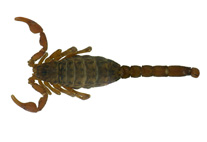Abstract
The Port Elizabeth Museum houses the consolidated herpetological collections of three provincial museums of the Eastern Cape, South Africa: the Port Elizabeth Museum (Port Elizabeth), the Amatole (previously Kaffarian) Museum (King Williams Town), and the Albany Museum (Grahamstown). Under John Hewitt, Albany Museum was the main centre of herpetological research in South Africa from 1910–1940, and he described numerous new species, many based on material in the museum collection. The types and other material from the Albany Museum are now incorporated into the Port Elizabeth Museum Herpetology collection (PEM). Due to the vague typification of much of Hewitt’s material, the loss of the original catalogues in a fire and the subsequent deterioration of specimen labels, the identification of this type material is often troublesome. Significant herpetological research has been undertaken at the PEM in the last 35 years, and the collection has grown to be the third largest in Africa. During this period, numerous additional types have been deposited in the PEM collection, generated by active taxonomic research in the museum. As a consequence, 43 different amphibian taxa are represented by 37 primary and 151 secondary type specimens in the collection. This catalogue provides the first documentation of these types. It provides the original name, the original publication date, journal number and pagination, reference to illustrations, current name, museum collection number, type locality, notes on the type status, and photographs of all holotypes and lectotypes. Where necessary to maintain nomenclatural stability, and where confused type series are housed in the PEM collection, lectotypes and paralectotypes are nominated.

